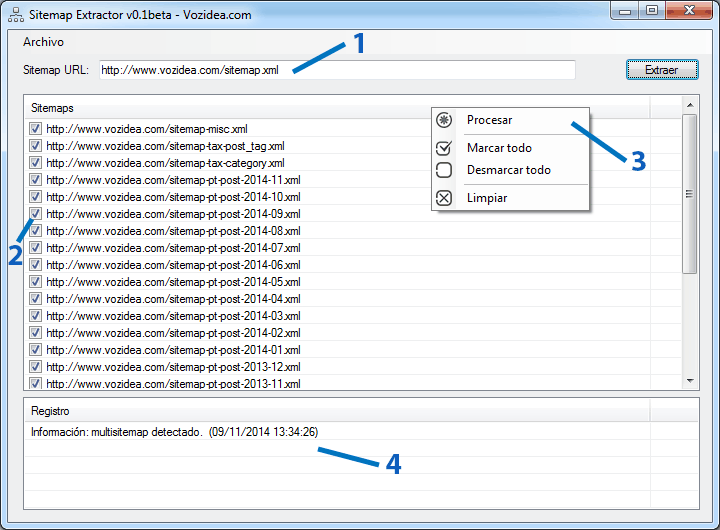

Complete object-oriented programming exampleĪnd this is an example of getting links from a web page using the above class: In order to check what we found, simply print out the content of the final list:Īnd we should see each URL printed out one by one. Once the script discovers the URLs, it will append them to the links list we have created before. find_all() method and let it know that we would like to discover only the tags that are actually links. What it does is it creates a nested representations of the HTML content.Īs the final step, what we need to do is actually discover the links from the entire HTML content of the webapage. Then, we create a BeautifulSoup() object and pass the HTML content to it. To begin with, we create an empty list ( links) that we will use to store the links that we will extract from the HTML content of the webpage. Let’s see how we can extract the needed information:įor link in BeautifulSoup(content).find_all('a', href=True): We are only one step away from getting all the information we need. Find and extract links from HTML using PythonĪt this point we have the HTML content of the URL we would like to extract links from. Now, we will only need to use the content component of the tuple, being the actual HTML content of the webpage, which contains the entity of the body in a string format. request() method returns a tuple, the first being an instance of a Response class, and the second being the content of the body of the URL we are working with.

Now we will need to perform the following HTTP request:Īn important note is that. We will need this instance in order to perform HTTP requests to the URLs we would like to extract links from. Next, we will create an instance of a class that represents a client HTTP interface: As an example, I will extract the links from the homepage of this blog : Now, let’s decide on the URL that we would like to extract the links from. To begin this part, let’s first import the libraries we just installed:įrom bs4 import BeautifulSoup, SoupStrainer If you don’t have them installed, please open “Command Prompt” (on Windows) and install them using the following code: To continue following this tutorial we will need the two Python libraries: httplib2 and bs4. Let’s see how we can quickly build our own URL scraper using Python. These scripts range from very simple ones (like the one in this tutorial) to very advanced web crawlers used by the industry leaders. It is also a big part for web scrapers in the programming community. URL extractors are a very popular tool for everyone involved in the digital space, from marketers to SEO professionals. Complete object-oriented programming example.The title attribute in the head elementĪ list of all the authors that are associated with this article.List of dominant colors extracted from favicon_url. By using this API through our service, you agree to its terms of service.įor display purposes we include provider_display, it's the subdomain, hostname, and public suffix of the provider. Embedly uses Google's Safe Browsing API to obtain a list of malicious urls.

Safe is an attribute that tells you if the url is on a phishing or malware list. How long Embedly is going to cache the response for? Generally, this is for a day, unless some external factor tells us to reevaluate the resource. Instead, it will return an error type response that includes the url, error_message and error_code.


 0 kommentar(er)
0 kommentar(er)
